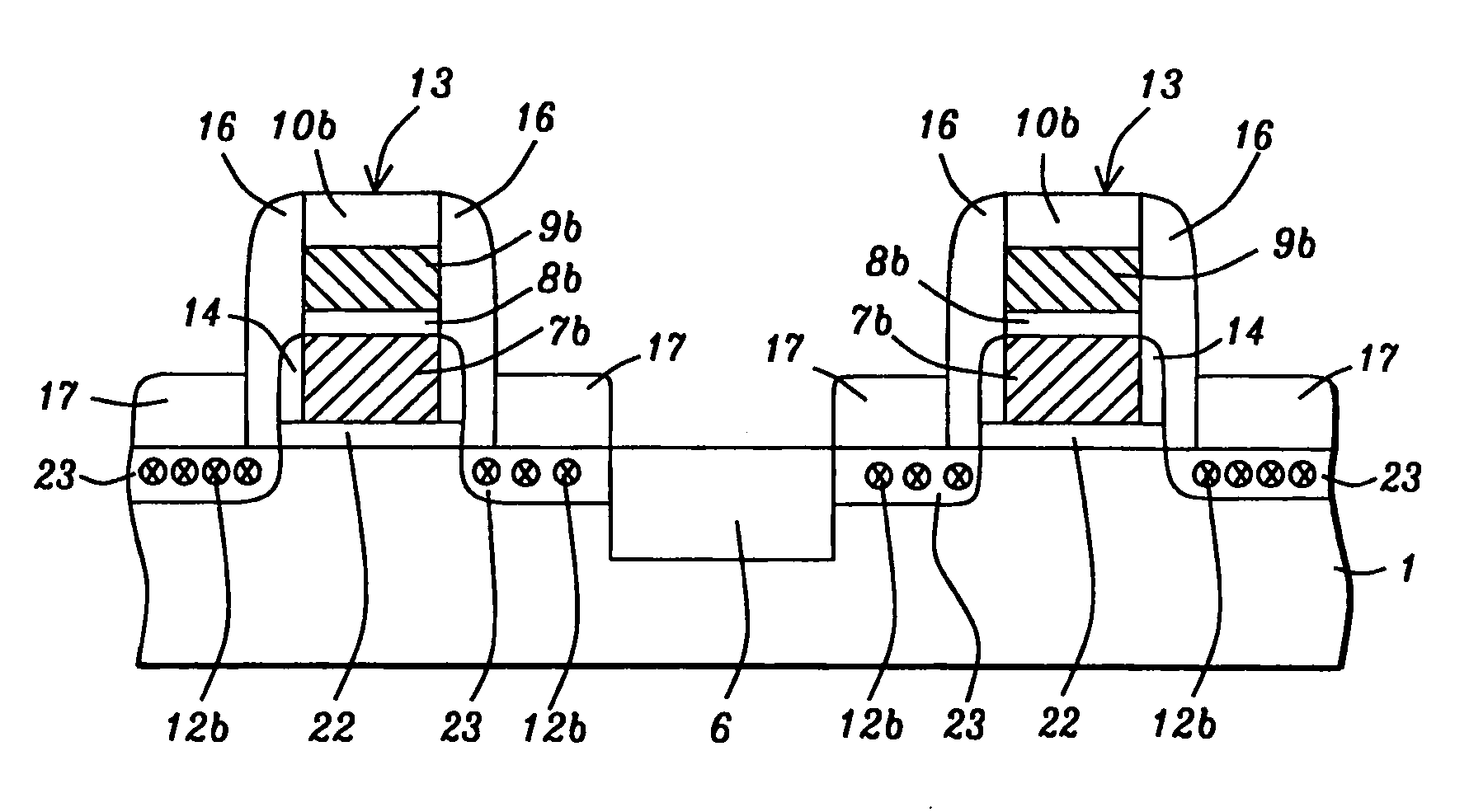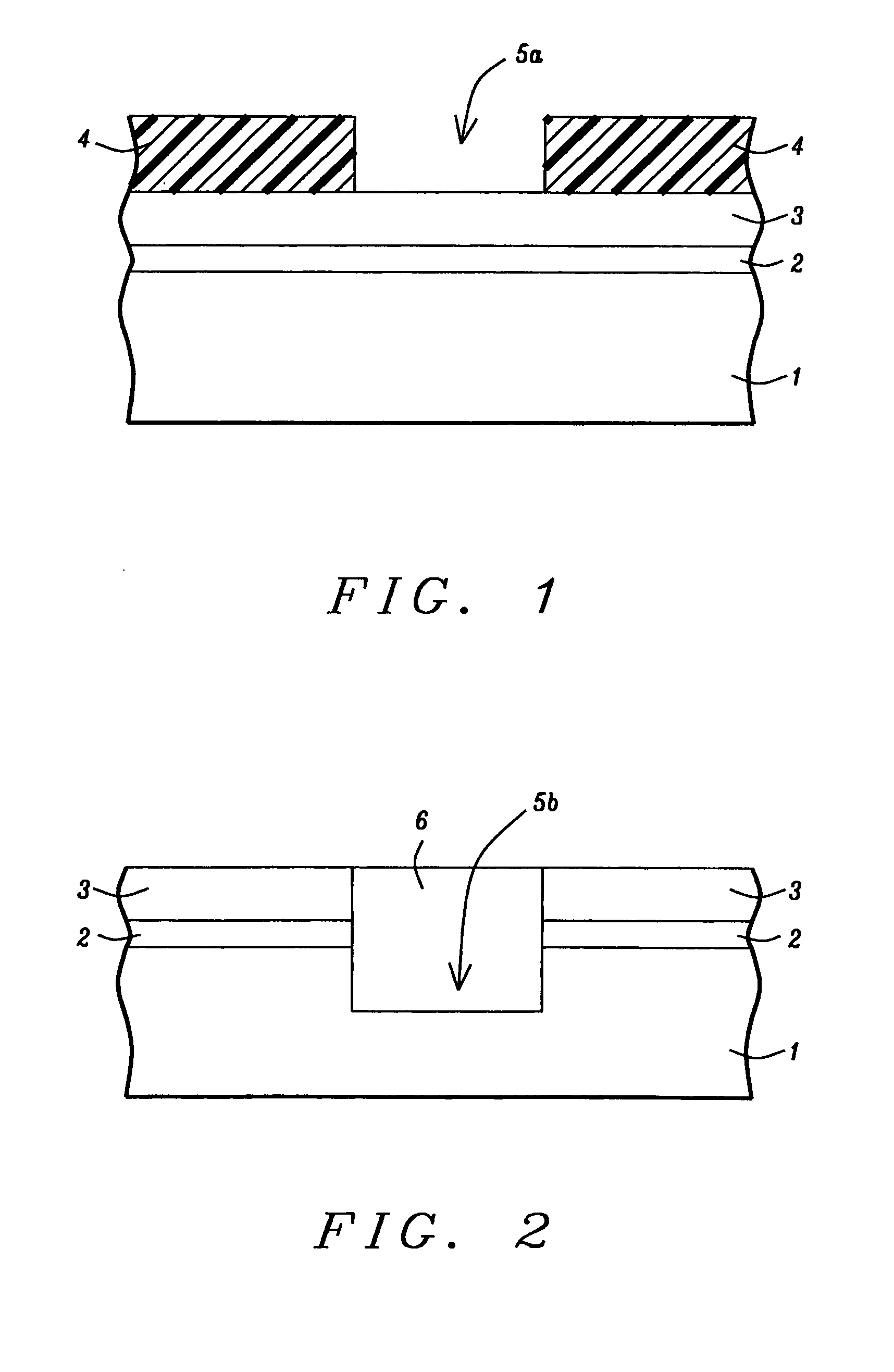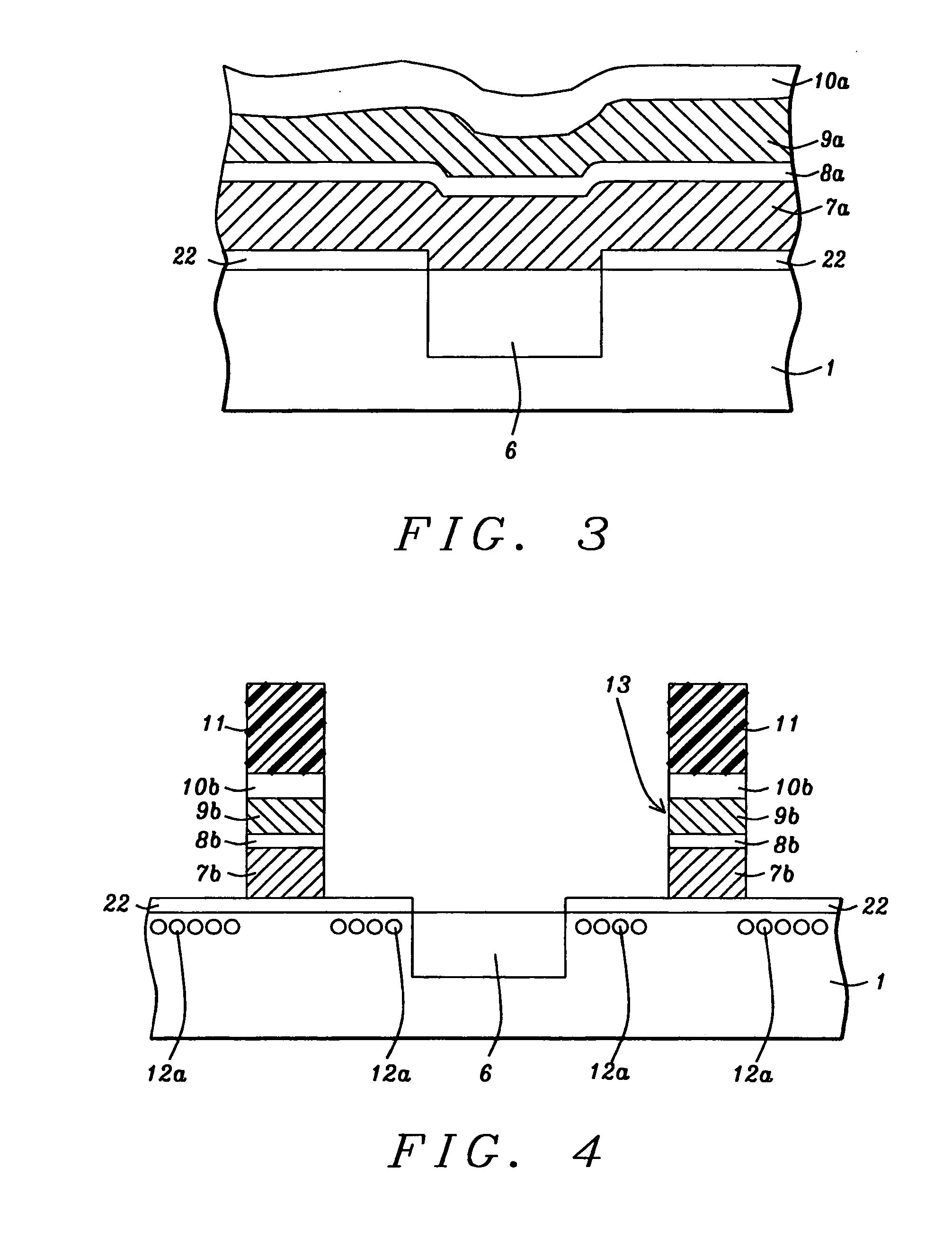Method for passivation of plasma etch defects in DRAM devices
a technology of dram devices and passivation methods, applied in the direction of semiconductor devices, basic electric elements, electrical equipment, etc., can solve the problems of poor device yield and performance, low retention time, and challenge the ability to fabricate efficient dram devices
- Summary
- Abstract
- Description
- Claims
- Application Information
AI Technical Summary
Problems solved by technology
Method used
Image
Examples
Embodiment Construction
[0013]A process used to fabricate a metal oxide semiconductor (MOS) device, specifically a DRAM device, wherein implantation of group V elements wit atomic mass equal or greater than arsenic is employed to passivate defects created at or near the surface of a semiconductor substrate, defects which resulted from high density plasma etching procedures, will now be described in detail. Semiconductor substrate 1 comprised of single crystalline silicon, with a crystallographic orientation is shown schematically in FIG. 1. Insulator layer 2 comprised of silicon dioxide, is next thermally grown to a thickness between about 90 to 100 Angstroms, in an oxygen-steam ambient at a temperature between about 900 to 920° C. Silicon nitride layer 3 is next formed on insulator layer 2, via chemical vapor deposition (CVD) procedures, such as low pressure chemical vapor deposition (LPCVD), or plasma enhanced chemical vapor deposition (PECVD). Silicon nitride layer 3 is grown to a thickness between abo...
PUM
 Login to View More
Login to View More Abstract
Description
Claims
Application Information
 Login to View More
Login to View More - R&D
- Intellectual Property
- Life Sciences
- Materials
- Tech Scout
- Unparalleled Data Quality
- Higher Quality Content
- 60% Fewer Hallucinations
Browse by: Latest US Patents, China's latest patents, Technical Efficacy Thesaurus, Application Domain, Technology Topic, Popular Technical Reports.
© 2025 PatSnap. All rights reserved.Legal|Privacy policy|Modern Slavery Act Transparency Statement|Sitemap|About US| Contact US: help@patsnap.com



